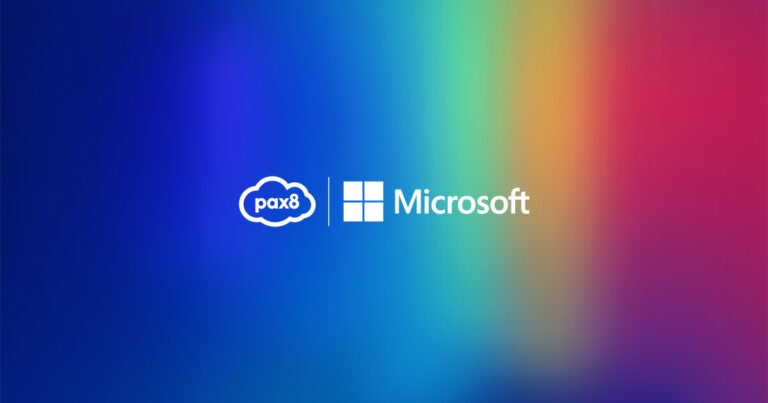In the fast-paced world of IT services, managed service providers (MSPs) are often swamped with the day-to-day tasks of managing existing clients and keeping up with industry changes. This leaves little time for effective prospecting. The Results Selling Framework (RSF) from Pax8 Academy can help — it’s your cheat code for successful prospecting, designed to make your sales efforts more efficient and impactful.
As a Senior Executive Coach at Pax8 Academy, my passion is helping MSP organizations enhance their operational and sales capabilities so they can scale and operate more efficiently.
Before joining Pax8, I spent 15 years in the MSP industry, where I learned and served in many roles, starting as a salesperson. With over 30 years of experience in leadership, I’ve focused on everything from operations and sales to building and growing sales teams and sales processes. And I’m excited to share my hard-earned insights with you through the Results Selling Framework.
Understanding the commodity trap
In IT sales, it’s easy to fall into the commodity trap—focusing too much on what we sell, how it works, what it costs, and how it compares to the competition. While discussing what we sell is unavoidable, it’s crucial to remember that people buy for their own reasons—both needs and wants. What problem does our service solve? What opportunity does it create? What value does it add for the client?
Uncovering a prospect’s needs
A key component of the Results Selling Framework is uncovering the prospect’s needs early on. This involves:
- Qualifying/disqualifying early: Ensuring you aren’t wasting time with a prospect who won’t close.
- Identifying multiple problems: Finding both business and personal challenges to understand how these issues impact their business.
- Engaging questions: Asking questions that get buyers involved in the process.
When executed well, this approach means you’ve tackled the hardest part of the sales process. You should now know the decision-making process, multiple pain points, valid business reasons to partner, and investment levels. This helps you determine if the prospect truly values IT services based on their responses.
Beyond sales techniques
Unlike many sales programs that focus solely on techniques, the Results Selling Framework emphasizes attitudes and behaviors that drive success. This proven sales process is geared around the buyer of IT services, developed by industry veterans who have spent decades selling IT services.
Making a good first impression
Just because a company is looking for a new IT provider doesn’t mean they’ll choose you. Like a first date, you need to make a good impression. Asking only about their tech needs isn’t enough. You need to ask business questions that provide useful insights and help establish a relationship.
The Pax8 Results Selling Framework
Here are some of the proven sales techniques MSPs will discover in the Pax8 Results Selling Framework:
- Best practice questions: Asking questions to uncover the problems prospects face, the impact on their business, and the ramifications of inaction.
- Engaging the prospect: Instead of simply offering a solution, you can now make the prospect feel as if purchasing that solution was THEIR idea. For example, rather than suggesting the prospect look into cybersecurity to protect their business, through this vital conversation, you’ll be able to make the prospect feel it’s their idea to better protect their company.
Sample questions
Through the Results Selling Framework (RSF), you’ll learn how to ask the right questions to target the perfect prospects with surgical precision. These questions are designed to dig deep into the prospect’s problems and needs, helping you uncover valuable insights that can make or break a deal. By understanding the underlying issues and their impacts, you can position yourself not just as their IT provider, but also as their indispensable business advisor. Here are some sample questions to get you started, focused primarily on cybersecurity as that’s top-of-mind for many clients:
-
- Do you have cybersecurity insurance?
This question helps you understand the prospect’s current security posture and preparedness.
- Do you have cybersecurity insurance?
-
- How much coverage do you have?
Knowing the extent of their coverage can give insights into their risk management strategy and potential gaps.
- How much coverage do you have?
-
- Have you ever had a cybersecurity incident? If so, can you share with me what happened?
This question digs into their past experiences and reveals pain points, allowing you to tailor your solutions to prevent future incidents.
- Have you ever had a cybersecurity incident? If so, can you share with me what happened?
-
- Explain to me how your current provider remediated this incident.
Understanding their current provider’s response helps you identify areas where you can optimize service.
- Explain to me how your current provider remediated this incident.
-
- Tell me about what protections you thought you had in place to reduce this risk.
This question uncovers misconceptions and gaps in their current security measures.
- Tell me about what protections you thought you had in place to reduce this risk.
-
- How did that incident impact your company?
By learning about the incident’s impact, you can highlight the importance of robust security solutions.
- How did that incident impact your company?
-
- Describe for me what happens when you get your annual cybersecurity survey from your insurance company.
This provides insights into their compliance and risk assessment processes.
- Describe for me what happens when you get your annual cybersecurity survey from your insurance company.
-
- Explain to me how your current provider helps you with that survey.
This helps you identify potential areas where their current provider may be lacking.
- Explain to me how your current provider helps you with that survey.
-
- Describe for me what you do in between those surveys.
Understanding their ongoing security practices can reveal opportunities for continuous improvement.
- Describe for me what you do in between those surveys.
-
- What are the ramifications to your company if you do not do anything about this?
This question emphasizes the importance of taking action and the potential consequences of inaction.
- What are the ramifications to your company if you do not do anything about this?
-
- Tell me how you want things optimized to minimize the risk in your organization.
This helps you understand their ideal outcomes and align your solutions accordingly.
- Tell me how you want things optimized to minimize the risk in your organization.
-
- What is your timeframe to implement these improvements?
Knowing their timeline allows you to create a realistic and actionable plan.
- What is your timeframe to implement these improvements?
The goal is to truly understand the root of the problem, the impact it has on the business, the ramifications of inaction, and the outcomes the prospect or client wants from your expertise. By asking these questions, you can uncover the true needs and challenges of your prospects, positioning yourself as the go-to solution partner in their journey towards success.
Winning better business
Whether it’s talking with a new prospect or to existing clients about technology that can solve their problems, the goal is to win—not just more business, but the right business. Here are some key results potential clients look for in an MSP:
- Growing their business
- Improving operational efficiencies and productivity
- Reducing risk
- Providing a competitive edge
- Enhancing relationships with employees, clients, and vendors
Before you leave…
Before leaving a meeting with a prospect or client, ensure you’ve addressed these pain points:
- Did you uncover 2-3 real business problems they are experiencing?
- Did you determine the impact of these problems on their business?
- Did you find out what they want to change, when they want the changes to occur, and what positive business outcomes they desire?
- Did you get confirmation from all stakeholders that these problems are real, they have an immediate timeline to fix them, and a budget to fix them?
Work with Pax8 Academy
We offer a wealth of resources around the Results Selling Framework to help you learn more. Together, we’ll make sure you don’t fall into the commodity trap, engage prospects meaningfully, and avoid being ghosted.
The path to success
The Pax8 Results Selling Framework is designed to help you succeed by focusing on meaningful engagement and understanding your prospects’ and clients’ needs. By asking the right questions and building strong relationships, you can position yourself as a valuable partner in their journey to success.
Explore more about the Results Selling Framework in Pax8 Academy and start transforming your sales approach today.
If you’re not a Pax8 partner and you’d like to learn more about the RSF or what Pax8 can do for your business, fill out this form and someone will reach out to you shortly.





